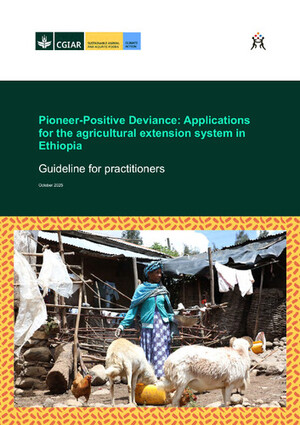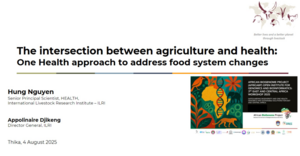
Addressing Africa’s deteriorating food security should be Africa’s top priority—World Bank
‘A key priority for Africa over the next decade should be to address a deteriorating food security situation that is compounded by the effects of climate change, declining agricultural productivity, and rapid population and urbanization growth.
Despite several commitments, ‘progress has been modest with only 9 out of 55 African countries currently on track to reduce under-nutrition to 5 percent or less by 2025. . . .
Going forward, policy priorities centered around leveraging science and digital technology and addressing fragility hold the greatest promise.
‘Climate change is already affecting agricultural production in Africa, and future projections suggest even worse outcomes. The frequency of droughts has dramatically increased, from an average of once every 12.5 years over 1982–2006 to once every 2.5 years over 2007–2016. These droughts have also become more severe and prolonged, diminishing the productive capacity of the land. Farmers face other climate risks, including lower and erratic rainfall, shorter rainy seasons, and a higher incidence of pests and diseases.
By some estimates, Africa could face a near double-digit reduction in crop yields and production volumes over the next decade, as well as rising food prices by similar margins.
The impacts of these and other indicators are projected to be even larger by 2080.
‘In places where climate-smart agriculture is practiced today, farmers are seeing increased food security and resilience. In Rwanda, for example, the Land Husbandry, Water Harvesting, and Hillside Irrigation project has helped control erosion, intensify yields on existing land, and provide greater protection from droughts. Under this program, maize yields increased 2.6 times between 2009 and 2018, with even larger increases for beans, wheat, and potatoes.
‘In Senegal, the West Africa Agricultural Productivity Program has developed new high-yielding, early-maturing, drought-resistant varieties of crops such as sorghum, millet, groundnuts, and cowpeas. These varieties are being widely disseminated to farmers and have raised yields by an average of 30 percent, even with less and more erratic rainfall. Despite the late onset of rains in 2014, with only half the average total rainfall, yields for farmers of improved sorghum and millet varieties increased.
Science offers enormous potential to provide sustainable solutions for food security, including innovations to improve adaptation to climate change, science-based management of productive resources (land, soil, and water), and the storability and transportability of foods to reduce food waste and loss.
‘Leveraging science effectively requires the translation of scientific solutions into packages that can be disseminated and adopted by farmers at scale, both at the farm and landscape levels. This task calls for effective linkages between international, regional, and national science organizations with farmers and extension systems. The solutions should be co-generated between researchers and farmers so that local resilience challenges can be addressed in a demand-driven and knowledge-intensive manner.
‘Sorely needed extension services, which impart new skills to farmers and enhance labor and land productivity, currently are often inadequate and may not always respond to farmers’ changing needs—and so digital technologies can help. Digital tools for monitoring climate risks can identify the onset of climatic shocks before they happen, and facilitate responses for building resilience. Automated irrigation systems, soil sensors, and drones can boost the efficiency of production. Digital tools can enhance food availability and accessibility, as well as improve food utilization and safety through effective monitoring of food hazards. E-commerce platforms can integrate smallholder farmers into value chains and enable them to eliminate the transaction costs of locating demand, determining prices, and improving efficiency in service delivery. . . .
‘The prevalence of undernutrition is about twice as high in conflict-affected areas. The effects of conflicts on food security include disruption of agricultural production activities at the farm level, disruption of post-harvest management functions such as marketing and storage, and the weakening of the ability of poor households to recover from shocks. Conflicts create stress on local and national institutions, leading to weak delivery of agricultural services and public infrastructure and low investments at the farm level and in downstream parts of the food system.
Africa cannot address food insecurity without addressing the agriculture-related drivers of conflict and fragility and their consequences. In this context, there is need to manage competition for natural resources in fragile areas, especially between herders and crop farmers.
‘Fragile and conflict-affected areas can be difficult to reach for outsiders. Therefore, it is important to build capacity in local institutions to enable design and implementation of community-based approaches. . . .’
Read the whole article: Policy priorities for achieving food and nutrition security in Africa by 2030, by Simeon Ehui, Holger Kray, Elliot W Mghenyi, in the World Bank’s Voices Blog, 22 Jan 2020.
This piece was originally published in the Brookings Africa Growth Initiative’s annual flagship Foresight Africa report. Read the full report: Foresight Africa: Top priorities for the continent 2020-2030, Brookings Institution, 8 Jan 2020.




















